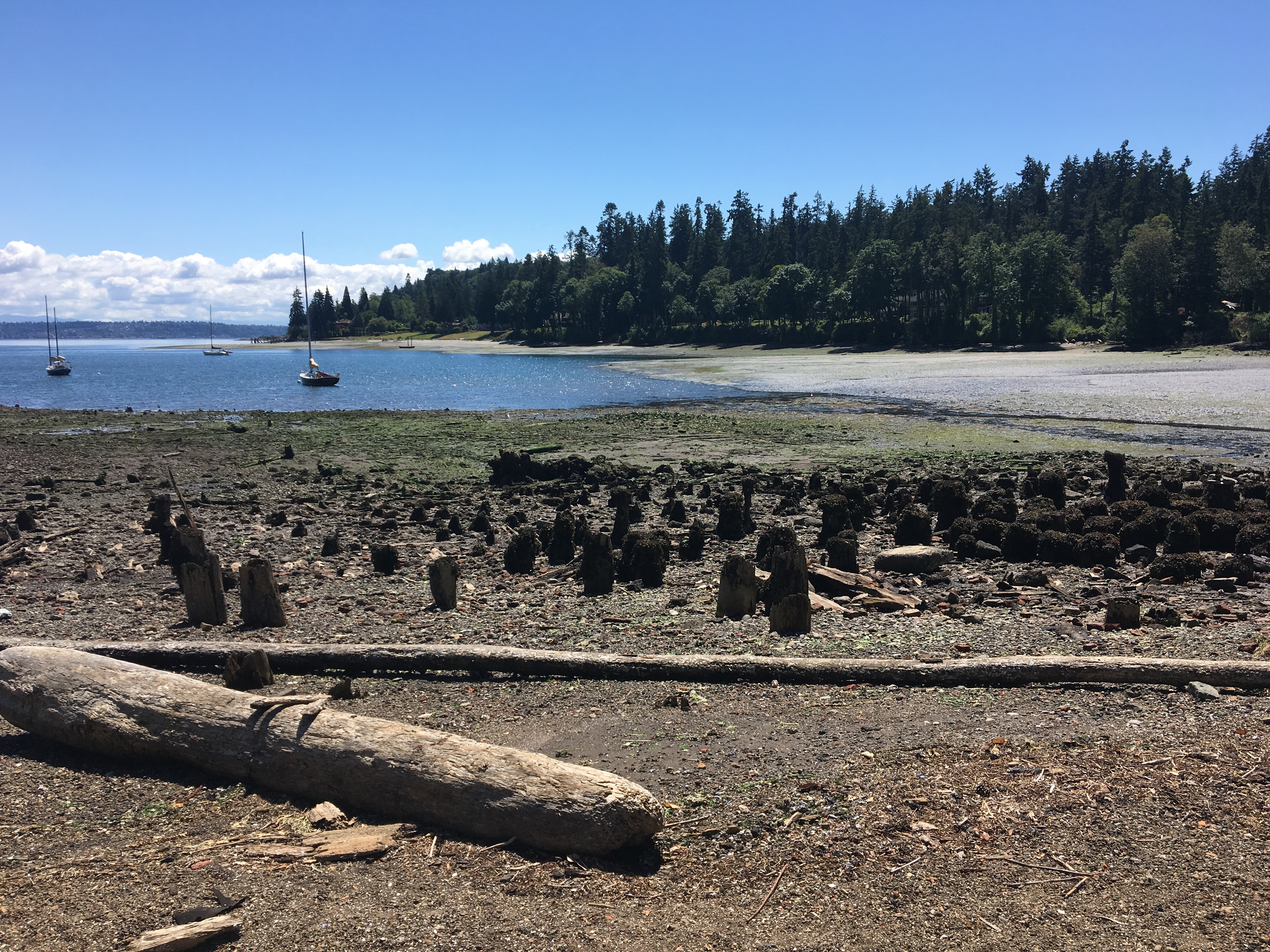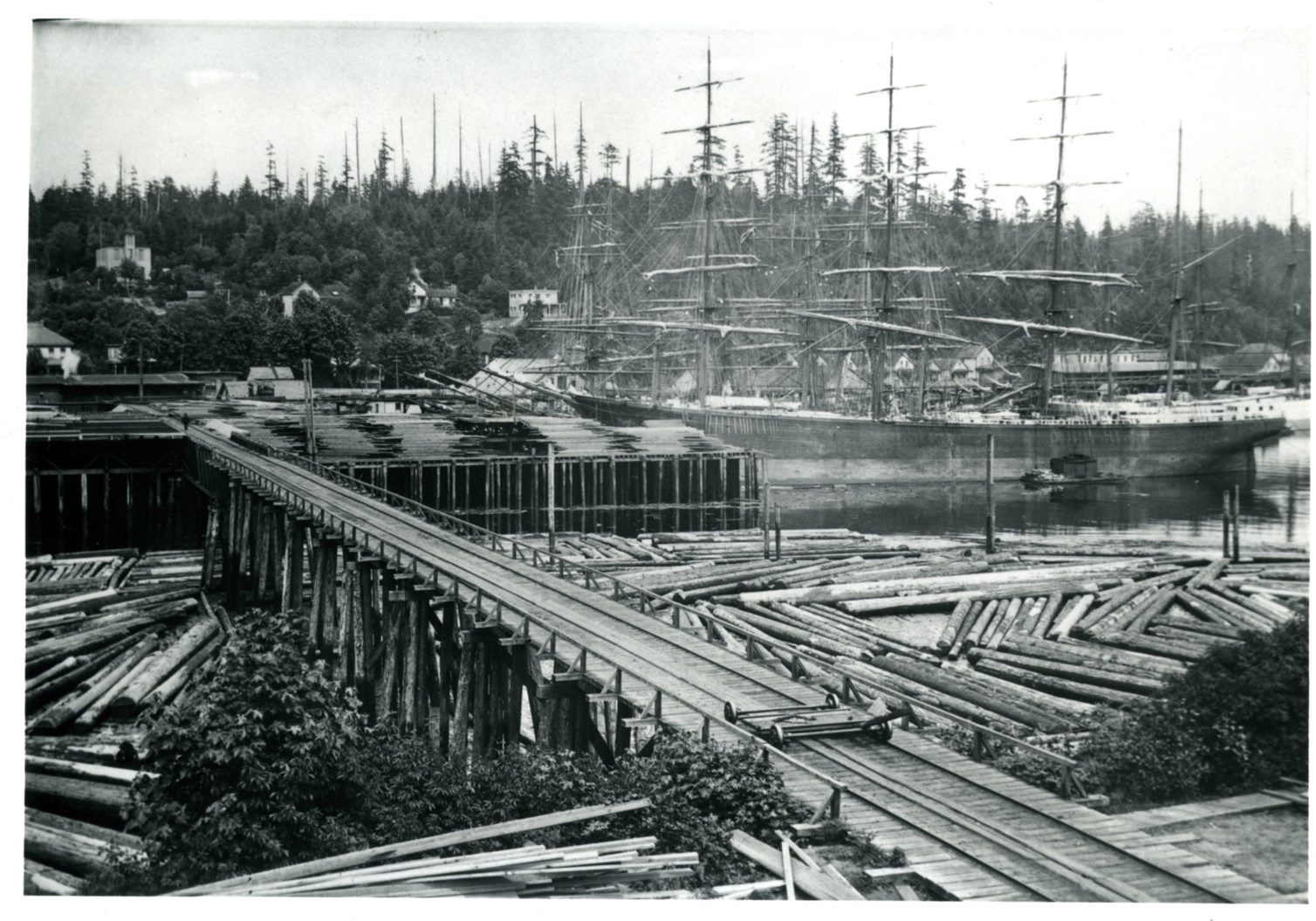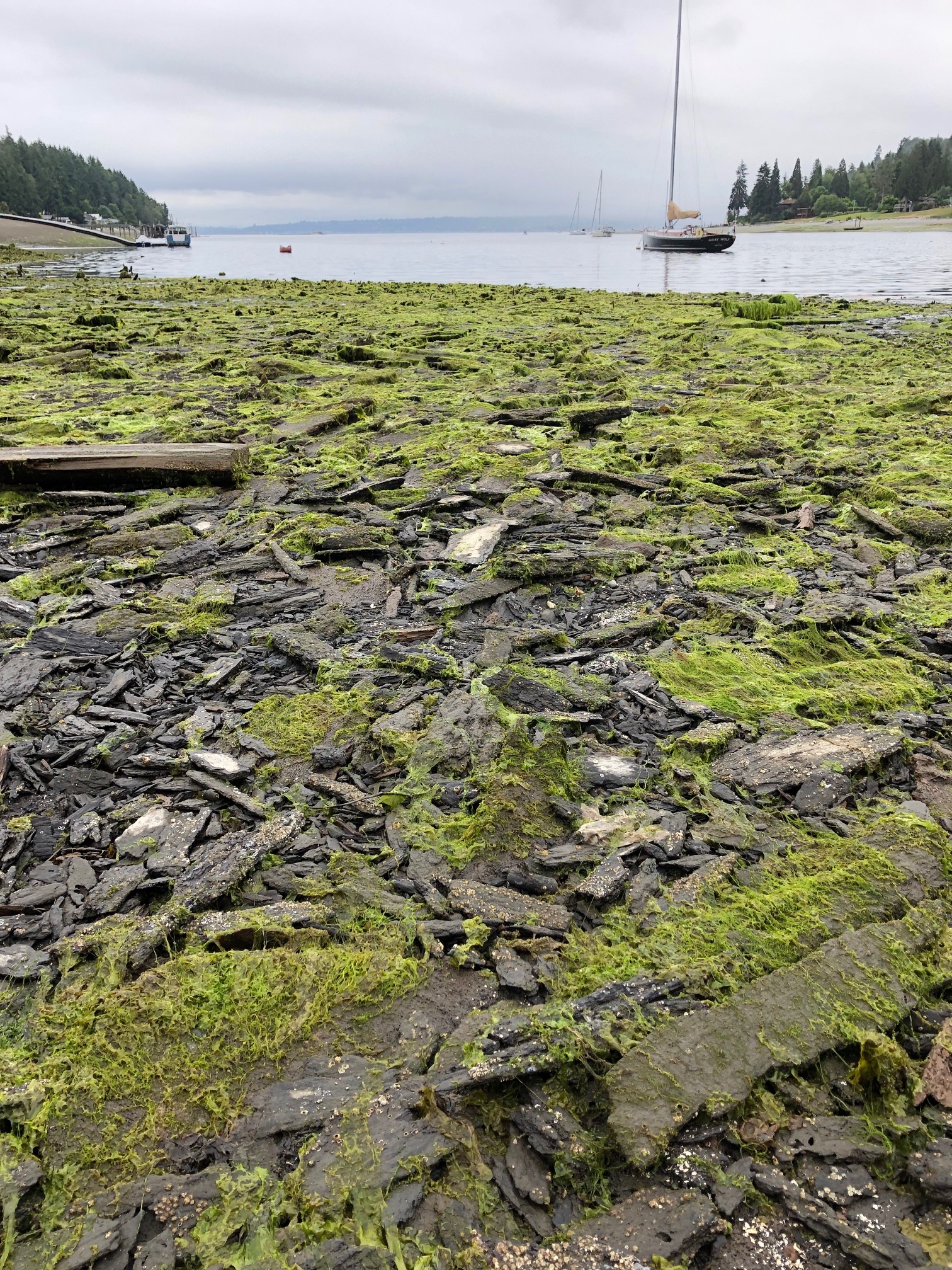
On the south end of Bainbridge Island a serene 40-acre park delivers stunning views of Blakely Harbor and iconic Washington state ferries sailing to and from Seattle. Charming houses overlook the inlet with colorful kayaks lining the shore and anchored sailboats bobbing in the waves.
It’s hard to believe Blakely Harbor Park was once home to the intense bustle of Port Blakely Sawmill, which at its height in the early 20th Century was one of the largest sawmills on the west coast, producing more than 100 million board feet of lumber a year. Blakely Harbor Park was once home to Port Blakely Sawmill, one of the largest mills on the west coast in the early 20th Century.
Unfortunately, the mill that once supported a thriving mill town also left a legacy of contamination when it closed its doors in 1922. Extensive wood waste left behind is decomposing, leaching toxins into the marine sediment. Upland soils contain contamination, as well.
Contamination and the impacts of wood waste
The beach at Blakely Harbor Park at low tide reveals decomposing wood waste.
To get a more accurate picture of the contamination, we provided $150,000 to fund two studies. This sediment and soil sampling found contaminants linked to historic sawmill operations including metals, phenols, polycyclic aromatic hydrocarbons, and dioxins/furans that are above state standards. Although harmful to the environment, they don’t pose an imminent threat to human health at these concentrations.
Cleanup is on the way and we want your feedback
The good news is now there are plans to clean it up — and we want you to be involved. We’ll be working with Port BlakelyTree Farms, which once owned and operated the mill, to more fully investigate soil, groundwater, and sediment at the site, then develop a cleanup action plan.
This agreement is laid out in a draft Agreed Order and you can help us with your feedback. We invite you to review and comment on the proposal as well as our draft Public Participation Plan, which outlines ways the community can learn about and give feedback on the site. The public comment period runs from March 2 to April 1.
Community open house
UPDATE: Due to recent King County Public Health recommendations about COVID-19 and Bainbridge Island’s proximity to Seattle, we are using an abundance of caution and canceling our March 10th open house.
Instead, we are hosting an online webinar, to invite participation from as many people in the community as possible.
The webinar is being held 6:30–7:30 p.m., Tuesday, March 17th. Register online.
Protecting Puget Sound
Cleaning up this site is essential for ensuring the protection of the marine environment. Blakely Harbor Park has many features that make it critical habitat for juvenile salmonids and marine mammals — like orcas — that feed on them.
This cleanup is part of the Puget Sound Initiative, a collaborative effort — by local, tribal, state and federal governments, business and environmental interests, and the public — to restore and protect the Sound. We look for opportunities like Port Blakely Harbor Park that will have a high impact on habitat in the Sound that benefits salmon, orcas, and other critical species.



